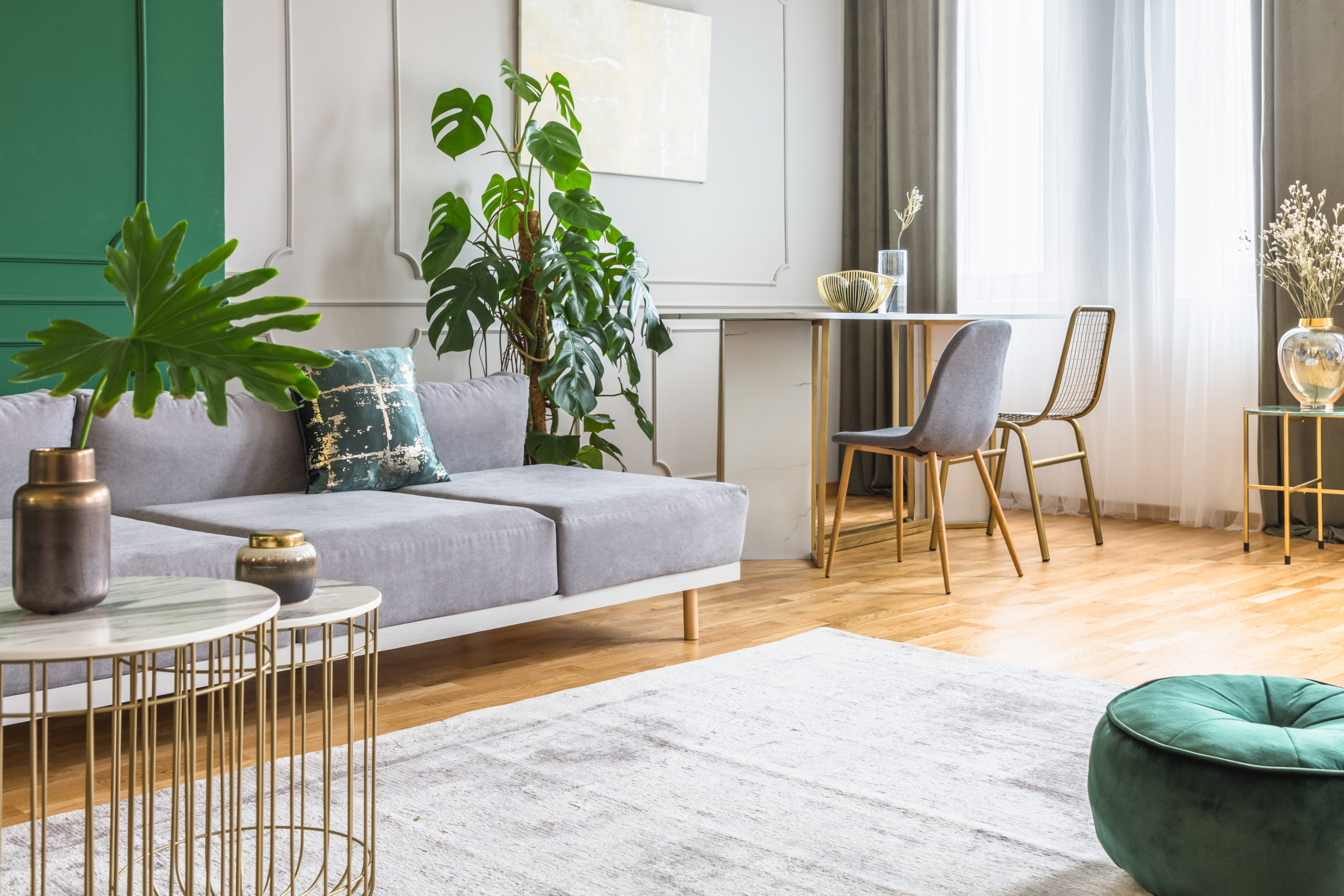How to ensure a sustainable home
You want to feel comfortable at home while at the same time showing respect for the environment and climate? Our expert has the best advice to make sustainable living a success. For example, by using ecological building materials as well as furniture and furnishings made from renewable and recyclable raw materials. Quality seals like the EMICODE® point the way to a sustainable and healthy home.
Tip 1: Use natural materials and avoid long transport routes
Especially your own home offers many opportunities for sustainable living. There is a whole spectrum of measures you can take – from energy-saving lamps and the economical use of electricity and heating energy to the purchase of furniture made from renewable and recyclable raw materials. Wood is considered to be a particularly ecological material. Being a natural resource, it stores carbon for many decades and therefore features a positive energy and CO2 balance. Cabinets, tables or floor coverings made of high-quality real wood can be sanded down and re-sealed or oiled at any time. With good care, they do their job for a whole lifetime. It is best, however, to use certified wood from sustainably managed European forests instead of exotic tropical woods. This helps avoid long transport distances and also ensures environmentally friendly production. Of course, there are also furnishings made of other natural materials from sustainable production, ranging from bamboo lamps and seaweed carpets to furniture and decorative items made of cork.
Tip 2: Take a closer look at building products
Apart from items like furniture and furnishings that are visible at first glance, there are also “invisible” ones like building materials. These include adhesives, wall panels, insulation underlays, sealants, primers, parquet varnishes, fillers and joint sealants. They as well should be checked for their environmental compatibility. In addition to the economical use of natural resources, also our personal well-being is of vital importance. Building and installation materials should therefore not emit any substances that are harmful to human health. In other words: They should be healthy for living. After all, we spend around 90 percent of our lives indoors, where floor coverings – next to walls and ceilings – account for the largest surface area.
Tip 3: EMICODE®-certified products ensure a healthy indoor climate
It’s a good thing that there are reliable quality seals that you can build on. The EMICODE® seal on the packaging, for example, provides safe and reliable guidance. The Europe-wide recognized eco-label carefully examines the layers of walls and floors and tests their health and environmental compatibility based on the most stringent criteria. Only very low-emission and absolutely healthy building and installation products receive the label. Regular spot checks carried out by independent experts and testing institutes ensure compliance with the high quality standard.

Photo: © bialasiewicz/GEV
Do You Have Questions?
If you have any questions on certain topics or want to contact us for another reason, please contact us by phone or email.
Phone: +49 (0)211 843 449 – 01
info@emicode.com
Share article on Social Media:
